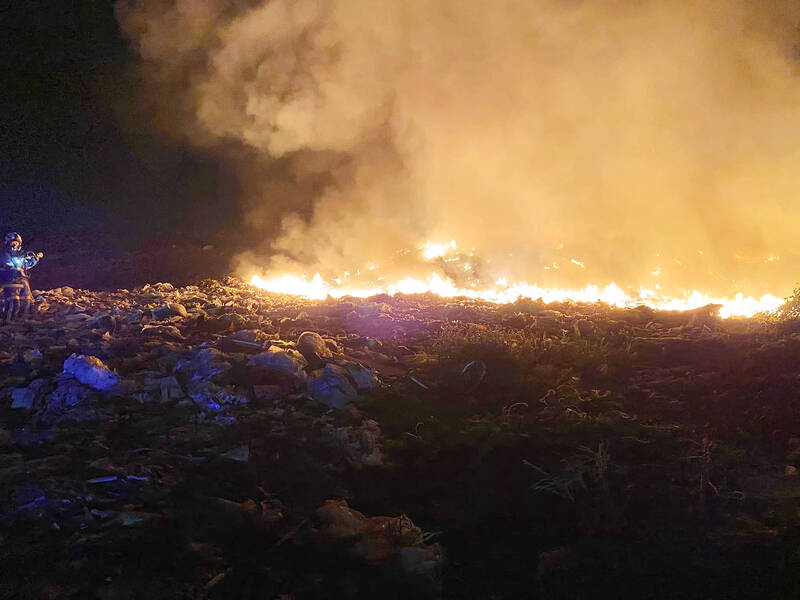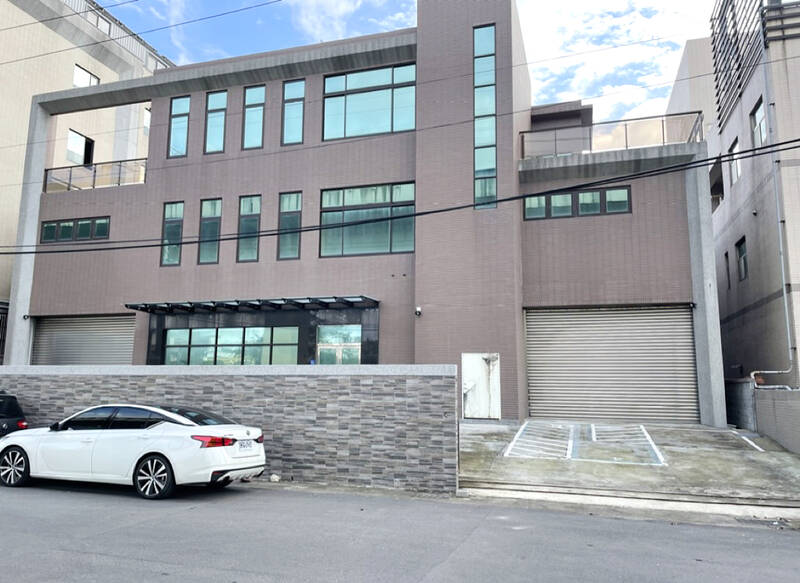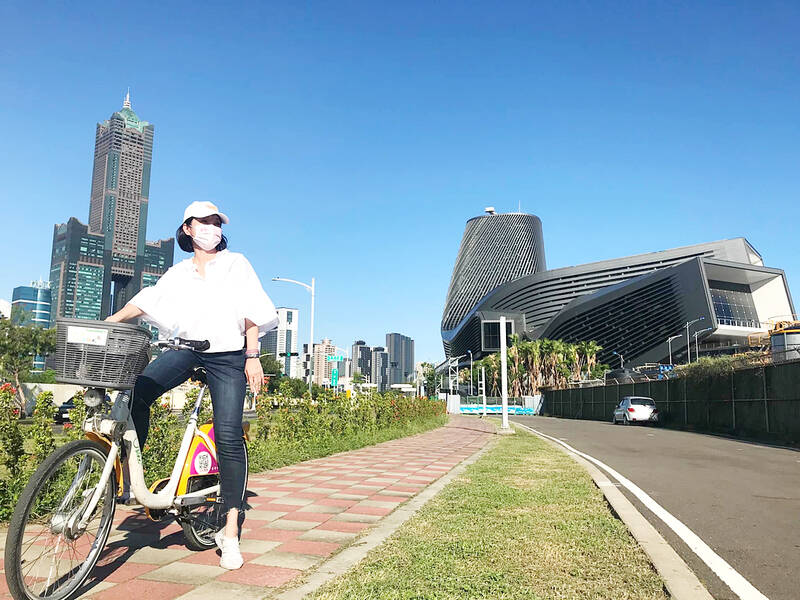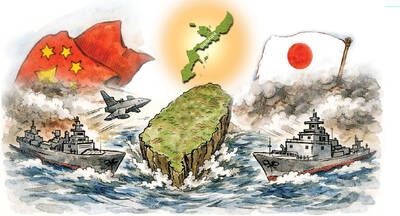Local consumers who feel guilty each time they dispose of a battery can now start to feel a bit better about their impact on the Earth.
Taiwan’s first recycling plant for lithium-ion batteries will soon begin operations in Taoyuan, bringing the country a step closer to achieving a circular economy.
UWin Resource Regeneration’s 1,500-square-meter facility will focus on recycling lithium-ion batteries (LIB), including lithium iron phosphate (LFP) batteries and batteries made from lithium nickel manganese cobalt (NMC) oxides.

Photo provided by reader
It represents an important step forward in the government-backed quest for a more circular economy — and not a moment too soon, as the number of LIBs entering the local waste stream is set to soar.
According to a Mar. 9, 2023 report in the Chinese-language United Daily News, the volume of discarded EV batteries in Taiwan rose from 278 metric tons in 2020 to 792 metric tons last year. The annual total is predicted to reach 2,020 metric tons in 2025, and 48,077 metric tons in 2035, due in large part to the growing popularity of hybrid cars and EVs such as Gogoro scooters.
LIBs are also inside smartphones, laptops, and countless other devices. While EV batteries have lifespans of eight to ten years, those in portable devices are seldom used for more than five years. Whatever its age, if an LIB is improperly disposed of, there’s a serious risk the metals inside it will leach into the soil or groundwater, and poison the environment.

Photo courtesy of UWin Resource Regeneration
“Until now, there’s been no good solution in Taiwan for this category of batteries,” says Leo Chang (張永撙), vice president of UWin Nanotech Co., Ltd, the majority shareholder in UWin Resource Regeneration. “We’re trying to have a complete process here in Taiwan, so there’s no need to export black mass,” he adds.
VALUABLE METALS

Photo: Huang Ming-tang, Taipei Times
Previously in Taiwan, batteries sent for recycling were handled by one of six companies licensed by the Environmental Protection Administration. All those companies do is discharge, disassemble and shred batteries, then export what the recycling industry calls “black mass” — a mixture of valuable metals including lithium, manganese, cobalt, and nickel — explains Chang.
Black mass produced in Taiwan has always been shipped overseas, usually to Japan or South Korea, because no smelter here is capable of separating and refining the various metals. UWin’s new facility, however, will be able to process 60 percent of Taiwan’s LIB black mass without resorting to energy-intensive furnaces.
Around the world, discarded batteries have been linked to numerous fires at landfill sites and recycling yards. Some recycling businesses in Taiwan are reluctant to handle them because of the fire risk, Chang says.

Photo courtesy of Ko Chih-en
To reduce this danger, before recycling batteries, it’s necessary to discharge them to a safe voltage. In some parts of the world, including China, this is usually done by immersing batteries in a saline solution. However, this is slow and sometimes ineffective, says Chang. It also creates wastewater, and it isn’t hard to imagine what happens if salty water is dumped untreated into a freshwater ecosystem.
Even though UWin has no plans to collect, discharge and shred batteries itself, Chang expects that some of the local companies which do this will soon be using one of UWin’s products during the discharge stage.
UWin has developed a green-chemistry technique which it says is far quicker and more effective than other discharge methods. UWin’s discharging agent leaves no sludge, and the wastewater is easy to treat. Conventional discharge techniques often corrode the batteries. If electrolytes leak out, there’s a flammability risk, and people nearby may suffer skin and eye damage.
HYDROMETALLURGY
UWin uses hydrometallurgy to extract useful metals from the black mass. But unlike many recycling operations, especially those in countries where environment regulations aren’t well enforced, instead of using cyanide or strong acid to leach metals, the company applies chemical solutions that aren’t a health threat to recycling workers and which don’t result in toxic effluent.
UWin uses solutions that contain their own patent chemicals to “mine” the black mass and extract lithium, cobalt and other metals. UWin is able to obtain lithium carbonate (Li2CO3, the precursor to compounds used in LIBs) that’s more than 99.9 percent pure, Chang says.
The Taoyuan plant will soon produce lithium carbonate for the local LIB supply chain. According to certification tests conducted by the Battery Research Center of Green Energy at Ming Chi University of Technology, the lithium carbonate recovered by UWin is at least as good as, and in some respects superior to, high-purity lithium carbonate that is commercially available in Japan.
After hydrometallurgy, the residue that’s left over is a solid waste which can be added to concrete as a reinforcing agent, much like fly ash from coal-fired power plants. It’s non-toxic, but current regulations stipulate that it can’t be used in house construction, only in the building of roads and bridges.
In several major economies, demand for recycling services is driven by regulations and corporate ESG policies.
In the EU, at least half of each new battery by weight must consist of recycled materials. From 2025, this requirement will increase to 65 percent for lithium-ion batteries. After 2030, the minimum will be 70 percent. Specific recycling requirements are planned for the lithium, cobalt, copper, nickel and lead content of batteries. The required recycling rate for lithium is set to increase from 50 percent to 80 percent between 2027 and 2031, and a minimum 90-percent recycling rate for cobalt, copper, nickel and lead has been announced for 2026.
According to Tesla’s 2021 Impact Report, almost 92 percent of the raw materials in its batteries are recovered and returned to Tesla for future use.
There’s another reason why battery manufacturers hope to either eliminate cobalt from their supply chains, or make do with recycled cobalt: In addition to being expensive and prone to wild price swings, the element is associated with unethical mining practices in Africa.
Even though identified global lithium reserves aren’t close to exhaustion, such is the demand for recovered materials that UWin expects to be able to sell recycled lithium at one and a half or even two times the price of raw material, Chang says.
COMPETITION
Of course, UWin isn’t the only company that’s trying to meet surging demand for recovered metals.
Nevada-based Aqua Metals Inc. says it’s able to recover valuable metals contained in lithium-ion batteries through electroplating (a process discovered more than 200 years ago) and what its Web site calls “a patent-pending, closed-loop, electro-hydrometallurgical process.”
Redwood Materials Inc., which is also headquartered in Nevada, told the Taipei Times via email that it handles LIBs equivalent to more than 100,000 electric cars per year. Among them are tiny batteries from wireless headphones and toothbrushes.
“We recover more than 95 percent of the critical minerals from batteries (nickel, cobalt, lithium and copper) and then remanufacture those materials into battery components (anode and cathode) that we supply directly back to US battery manufacturers,” the company says.
When discharging end-of-life batteries, Redwood uses the residual energy to help power its plant. Other energy needs are met entirely by renewables, “requiring no natural gas or other sources of fossil fuels. Our facilities have zero liquid discharge, avoiding potential for contaminated process water exiting the site,” the company says.
Compared to established intercontinental supply chains for battery materials and components, Redwood says its recovery and remanufacturing processes reduce CO2 emissions by 83 percent.
According to some studies, manufacturing an EV creates more carbon emissions than making a gasoline-powered car, because of the energy needed to manufacture its battery. But if recycling LIBs becomes the norm, the environmental case for EVs will become even stronger. The next step, of course, is to decarbonize the power grid, so that charging EVs doesn’t require the burning of millions of metric tons of fossil fuels.
Steven Crook, the author or co-author of four books about Taiwan, has been following environmental issues since he arrived in the country in 1991. He drives a hybrid and carries his own chopsticks. The views expressed here are his own.

Most heroes are remembered for the battles they fought. Taiwan’s Black Bat Squadron is remembered for flying into Chinese airspace 838 times between 1953 and 1967, and for the 148 men whose sacrifice bought the intelligence that kept Taiwan secure. Two-thirds of the squadron died carrying out missions most people wouldn’t learn about for another 40 years. The squadron lost 15 aircraft and 148 crew members over those 14 years, making it the deadliest unit in Taiwan’s military history by casualty rate. They flew at night, often at low altitudes, straight into some of the most heavily defended airspace in Asia.

Taiwan’s democracy is at risk. Be very alarmed. This is not a drill. The current constitutional crisis progressed slowly, then suddenly. Political tensions, partisan hostility and emotions are all running high right when cool heads and calm negotiation are most needed. Oxford defines brinkmanship as: “The art or practice of pursuing a dangerous policy to the limits of safety before stopping, especially in politics.” It says the term comes from a quote from a 1956 Cold War interview with then-American Secretary of State John Foster Dulles, when he said: ‘The ability to get to the verge without getting into the war is

Beijing’s ironic, abusive tantrums aimed at Japan since Japanese Prime Minister Sanae Takaichi publicly stated that a Taiwan contingency would be an existential crisis for Japan, have revealed for all the world to see that the People’s Republic of China (PRC) lusts after Okinawa. We all owe Takaichi a debt of thanks for getting the PRC to make that public. The PRC and its netizens, taking their cue from the Chinese Communist Party (CCP), are presenting Okinawa by mirroring the claims about Taiwan. Official PRC propaganda organs began to wax lyrical about Okinawa’s “unsettled status” beginning last month. A Global

Like much in the world today, theater has experienced major disruptions over the six years since COVID-19. The pandemic, the war in Ukraine and social media have created a new normal of geopolitical and information uncertainty, and the performing arts are not immune to these effects. “Ten years ago people wanted to come to the theater to engage with important issues, but now the Internet allows them to engage with those issues powerfully and immediately,” said Faith Tan, programming director of the Esplanade in Singapore, speaking last week in Japan. “One reaction to unpredictability has been a renewed emphasis on